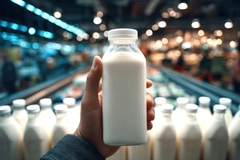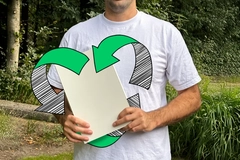ACE releases beverage carton recycling guidelines, questions biodegradable polymer use

27 Oct 2022 --- The Alliance for Beverage Cartons and the Environment (ACE) has released guidelines on how the industry can improve beverage carton recyclability. Even though cartons have a high recyclability rate compared to other containers, ACE still wants to optimize the process for improved circularity.
The guidelines provide drink carton producers with technical advice to identify the materials needed in packaging components that are compatible with existing recycling processes and how the recyclability of beverage cartons can be optimized.
ACE is a collaboration of companies that claim a commitment to sourcing renewable materials from sustainably managed forests and recycling at end-of-life. ACE members believe their packaging has a reduced environmental footprint and contributes to a low-carbon circular economy. Members include beverage carton producers Tetra Pak, SIG Combibloc, and Elopak.
“Beverage cartons are recycled throughout the EU. By providing guidelines on the material composition of beverage cartons and how they should be designed for recycling, the industry continues to show its commitment to increasing the recyclability of beverage cartons. The Design for Recycling Guidelines is a sound basis to define the recyclability of packaging,” says Annick Carpentier, director general of ACE.
 Beverage carton manufacturer coalition, ACE, releases guidelines for better recyclability of carton materials Recycling guidelines
Beverage carton manufacturer coalition, ACE, releases guidelines for better recyclability of carton materials Recycling guidelines
The recommendations for drink carton producers are based on experts and consultations with targeted stakeholders, including recyclers, waste management operators and technology providers.
Beverage cartons already have a recycling rate of 51% of all cartons sold in Europe, with countries such as Belgium and Germany achieving over 70%, according to the Alliance for Beverage Cartons and the Environment.
Recycling of beverage cartons begins with the recovery of the paper fibers, which constitute approximately 75% of the total weight of the carton. Once-used fibers from liquid cartons are used for various applications, including producing multiple paper grades and packaging products such as corrugated boxes, paper bags and tissue paper.
This report is complementary to the published 4evergreen DfR Guidelines for standard recycling processes and will feed into the upcoming 4evergreen Guidelines for enhanced functions (specialized recycling plants).
The alliance’s goal for 2030 is to deliver the most sustainable packaging for resilient food supply systems, which is “renewable, climate positive and circular.”
Carton composition
There are two main types of liquid cartons: aseptic and non-aseptic.
Aseptic beverage cartons containing sterilized products are typically composed of layers of liquid packaging board, low-density PE and aluminum. Non-aseptic beverage cartons have fresh products and require refrigeration.
Non-aseptic beverage cartons do not require the additional aluminum foil layer as aseptic ones. However, in both aseptic and non-aseptic beverage cartons, an inner layer of low-density PE is applied to enable heat sealing of the carton and to further protect the board from the contents of the carton.  ACE’s recommendations for the beverage carton recycling systems will be updated annually based on industry trajectory.
ACE’s recommendations for the beverage carton recycling systems will be updated annually based on industry trajectory.
The guidelines stipulate that all elements of the packaging be recycled. ACE recommends separating and sorting different materials in the cartons to, which is possible with today’s mechanical recycling systems.
In similar news, SIG recently launched “Recycle for Good” in Egypt – an initiative to collect used aseptic cartons. The initiative enables consumers to use an app to arrange for their used aseptic carton packs to be collected from their homes or workplace in exchange for rewards.
Carton plastics
However, the report states that biodegradable polymers may be incompatible with the sorting processes. They may also negatively influence the properties, performance and value of materials and products created for their second life.
Whereas, according to the ACE guidelines for the recyclability of polyolefin-based flexible packaging, carton packaging is fully compatible with mechanical recycling processes producing recycled PP pellets when composed of more than 90% PE. The material has limited compatibility at 80-90% PE; at less than 80%, it is not compatible.
ACE plans to update the guidelines during an annual review and update as necessary to reflect the situation of the industry and environment.
By Sabine Waldeck











